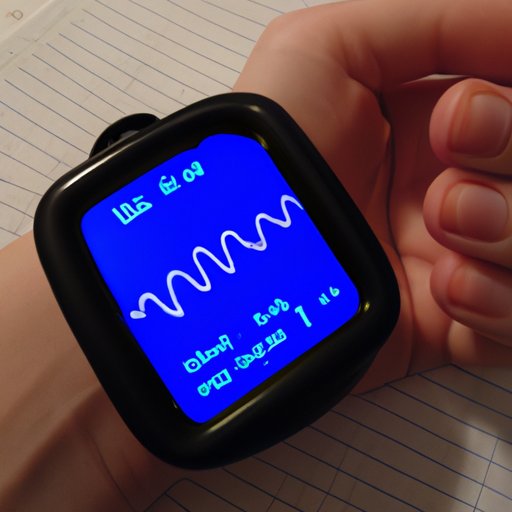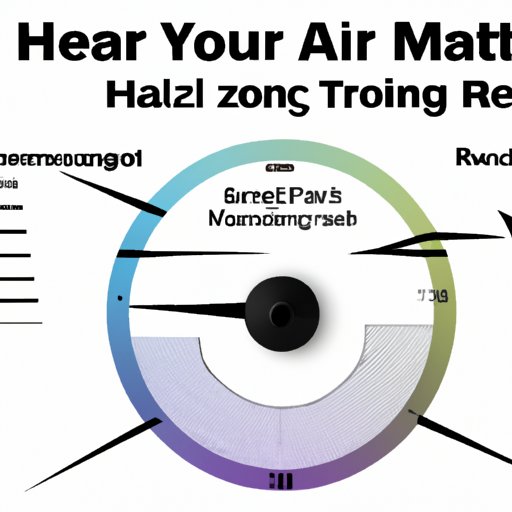Introduction
A healthy heart rate is an important indicator of overall physical health and fitness. Knowing what constitutes a healthy heart rate can help you to make sure that your body is functioning at its best and reduce the risk of developing chronic diseases. In this article, we will explore what is a healthy heart rate and discuss the basics of maintaining one.

Exploring the Basics of a Healthy Heart Rate
Before we discuss what is a healthy heart rate, let’s first understand what a heart rate is and what factors influence it. The heart rate is simply the number of times your heart beats per minute (bpm). It is usually measured by counting the number of pulses or beats in a minute using a stethoscope, pulse oximeter, or other specialized device.
The heart rate is influenced by several factors such as age, gender, physical activity level, medications, and underlying medical conditions. Other factors such as stress, anxiety, and emotions can also affect the heart rate.
What is an Optimal Heart Rate for Health and Fitness?
When considering what is a healthy heart rate, it is important to understand the average resting heart rate and maximum heart rate. The average resting heart rate is the number of times the heart beats per minute when the body is at rest. This typically ranges from 60-100 bpm and decreases with age. The maximum heart rate is the highest number of times the heart can beat per minute during strenuous activity. This is calculated by subtracting your age from 220 bpm.
Once you know your average resting heart rate and maximum heart rate, you can calculate your target heart rate range. This range is typically between 50-85% of your maximum heart rate and is used to measure the intensity of physical activity. By keeping your heart rate within this range during exercise, you can maximize the health benefits of physical activity.
The Benefits of Maintaining a Healthy Heart Rate
Maintaining a healthy heart rate has many benefits for both physical health and fitness. A few of these include:
- Improved cardiovascular health: Regular exercise helps to keep the heart strong and improves blood circulation throughout the body. Keeping your heart rate within the target range can help to optimize the health benefits of physical activity.
- Improved physical fitness: Regular exercise helps to strengthen muscles and improve endurance. Keeping your heart rate within the target range ensures that you are working out at the right intensity to reap the most benefits.
- Reduced risk of chronic conditions: Regular exercise helps to reduce the risk of developing chronic conditions such as heart disease and diabetes. Keeping your heart rate within the target range can help to further reduce the risk of developing these conditions.

Understanding Your Target Heart Rate Zone
Now that you know what is a healthy heart rate, let’s discuss how to calculate your target heart rate zone and track your heart rate during exercise. To calculate your target heart rate zone, use the following formula:
Target Heart Rate = (Maximum Heart Rate – Resting Heart Rate) x Intensity Level + Resting Heart Rate
Intensity level refers to the percentage of your maximum heart rate that you wish to reach while exercising. For example, if your resting heart rate is 60 bpm and your maximum heart rate is 200 bpm, then your target heart rate for moderate intensity exercise would be 140 bpm (200-60 x 0.7 + 60).
To track your heart rate during exercise, use a heart rate monitor or manually check your pulse at your wrist or neck. Make sure to keep your heart rate within the target range to ensure that you are getting the most benefit from your workout.

Tips for Monitoring and Improving Your Heart Rate
In addition to tracking your heart rate during exercise, there are several other ways to monitor and improve your heart rate. Here are some tips to get you started:
- Eat a balanced diet: Eating a balanced diet that is low in saturated fat, sugar, and salt will help to keep your heart healthy.
- Exercise regularly: Regular physical activity helps to keep your heart strong and reduce the risk of developing chronic conditions.
- Monitor your stress levels: Stress can have a negative impact on your heart health, so it is important to take steps to reduce stress.
- Get adequate rest: Adequate sleep is necessary for optimal heart health, so make sure to get enough rest each night.
Conclusion
Keeping your heart rate within the target range is essential for optimal physical health and fitness. Understanding what is a healthy heart rate and taking steps to monitor and improve it can help to reduce the risk of developing chronic conditions and improve overall physical wellbeing. Take the time to calculate your target heart rate zone and track your heart rate during exercise. Finally, remember to eat a balanced diet, exercise regularly, manage your stress levels, and get adequate rest to maintain a healthy heart rate.
(Note: Is this article not meeting your expectations? Do you have knowledge or insights to share? Unlock new opportunities and expand your reach by joining our authors team. Click Registration to join us and share your expertise with our readers.)
